نکات کلیدی
1. زیبایی تجربهای جهانی و عقلانی است
زیبایی میتواند تسکیندهنده، آزاردهنده، مقدس و یا بیمقدس باشد؛ میتواند شگفتانگیز، جذاب، الهامبخش و یا سردکننده باشد. هیچگاه با بیتوجهی به آن نگاه نمیشود: زیبایی خواهان توجه است؛ بهطور مستقیم با ما صحبت میکند، مانند صدای یک دوست نزدیک.
درک فلسفی زیبایی. زیبایی تنها یک ترجیح ذهنی نیست، بلکه تجربهای عقلانی است که ظرفیتهای شناختی عمیقتری را در ما درگیر میکند. بر خلاف لذتهای حسی ساده، قضاوتهای زیباییشناختی شامل فرآیندهای پیچیدهی فکری و احساسی هستند که ما را به تجربیات انسانی وسیعتری متصل میکنند.
ویژگیهای کلیدی زیبایی:
- فراتر از ویژگیهای فیزیکی ساده است
- دعوت به تأمل و تفکر میکند
- ما را به چالش میکشد تا معنا پیدا کنیم
- تجربهی فردی را به بینشهای جهانی متصل میکند
طبیعت عقلانی قضاوت زیباییشناختی. زیبایی تصادفی نیست، بلکه ریشه در ظرفیت ما برای قدردانی معقول دارد. زمانی که زیبایی را شناسایی میکنیم، در یک فعالیت انسانی عمیق شرکت میکنیم که فراتر از سلیقهی شخصی است و توانایی ما را برای درک و قدردانی از معانی وجودی عمیقتر آشکار میسازد.
2. زیبایی انسانی فردیت را نمایان میسازد
زیبایی در یک فرد، تمایل را برمیانگیزد. اما این تمایل تنها فیزیکی نیست؛ بلکه یک تعامل پیچیده است که فردیت منحصر به فرد شخص را شناسایی میکند.
فردیت تجسمیافته. زیبایی انسانی به کمال فیزیکی مربوط نمیشود، بلکه به نمایانسازی فردیت منحصر به فرد یک شخص مربوط است. جذابترین زیبایی انسانی از طریق حالات چهره، حرکات و نحوهی تابش زندگی درونی فرد از طریق حضور فیزیکیاش پدیدار میشود.
ابعاد زیبایی انسانی:
- فراتر از ظاهر فیزیکی است
- شخصیت فردی را منتقل میکند
- دعوت به قدردانی تأملی میکند
- ابعاد فیزیکی و روحانی را متصل میکند
بعد مقدس زیبایی انسانی. درک ما از زیبایی انسانی شامل شناسایی راز عمیق وجود فردی است. این یک مواجهه است که بهطور همزمان به کرامت شخصی احترام میگذارد و کیفیت غیرقابل توصیف حضور انسانی را ارج مینهد.
3. زیبایی طبیعی فراتر از تأملات عمیق را ارائه میدهد
برای دیدن یک جهان در دانهای از شن و بهشت در یک گل وحشی...
مواجهه زیباییشناختی با طبیعت. زیبایی طبیعی تنها به لذت بصری مربوط نمیشود، بلکه تجربهای عمیق از ارتباط است. زمانی که به مناظر طبیعی، موجودات یا پدیدههای آسمانی تأمل میکنیم، با حس عمیقتری از نظم و معنا روبهرو میشویم که فراتر از تجربه حسی فوری است.
ویژگیهای زیبایی طبیعی:
- هارمونی کیهانی نهفته را نمایان میسازد
- دعوت به تأمل مدیتاتیو میکند
- ادراک فردی را به الگوهای جهانی متصل میکند
- معنای متافیزیکی را پیشنهاد میدهد
قدرت تحولآفرین تأمل در طبیعت. با درگیر شدن با زیبایی طبیعی، بهطور موقت از دیدگاههای کارکردی فرار میکنیم و تجربهای جامعتر از وجود را درک میکنیم. این رویکرد تأملی به ما اجازه میدهد خود را بهعنوان بخشی از یک زمینه کیهانی بزرگتر و معنادار درک کنیم.
4. زیبایی روزمره از طریق استدلال عملی پدیدار میشود
وقتی برای مهمانان میز میچینید، به سادگی بشقابها و قاشق و چنگالها را بههم نمیزنید. شما بهدنبال این هستید که همه چیز بهدرستی به نظر برسد.
ابعاد زیباییشناختی زندگی عملی. زیبایی محدود به هنرهای عالی یا تجربیات فوقالعاده نیست، بلکه در فعالیتهای روزمره پدیدار میشود. استدلال عملی ما بهطور مداوم شامل قضاوتهای زیباییشناختی دربارهی تناسب، هارمونی و مناسب بودن است.
اصول زیباییشناختی در زندگی روزمره:
- جستجوی هارمونی بصری و کارکردی
- اتخاذ تصمیماتی که ارزشهای فرهنگی و شخصی را منعکس میکند
- ایجاد محیطهای معنادار
- ابراز هویت از طریق چیدمان
هماهنگی اجتماعی از طریق قضاوت زیباییشناختی. انتخابهای زیباییشناختی روزمره ما تنها شخصی نیستند، بلکه به درک اجتماعی کمک میکنند. با درست به نظر رساندن چیزها، در یک فرآیند جمعی برای ایجاد معانی و تجربیات مشترک شرکت میکنیم.
5. زیبایی هنری از طریق بیان معنا خلق میکند
زیبایی در هنر با بیان گره خورده است: اینجا دو کیفیت وجود ندارد، زیبایی و بیان، بلکه یک کیفیت است.
هنر بهعنوان ارائهای معنادار. زیبایی هنری فراتر از بازنمایی میرود و از طریق اشکال منحصر به فرد بیان، معنا خلق میکند. هنرمندان تجربههای خام را به بازنماییهای منسجم و عاطفی تبدیل میکنند که حقایق عمیقتری دربارهی وجود انسانی را نمایان میسازد.
ابعاد بیان هنری:
- فراتر از بازنمایی لفظی است
- تجربیات عاطفی و فکری پیچیده را منتقل میکند
- دیدگاههای جدیدی بر واقعیت خلق میکند
- دعوت به تفسیر فعال میکند
طبیعت استعاری معنای هنری. زیبایی هنری از طریق ارتباطات استعاری عمل میکند و به مخاطبان اجازه میدهد واقعیتهای آشنا را از دیدگاههای متحول شده تجربه کنند. این فرآیند خلق معنا خود یک تجربه زیباییشناختی عمیق است.
6. سلیقه بازتابدهندهی ارزشهای فرهنگی و شخصی عمیقتر است
سلیقه نوعی هوش اجتماعی است، راهی برای ناوبری در معانی فرهنگی و آرزوهای شخصی.
سلیقه بهعنوان ناوبری فرهنگی. قضاوتهای زیباییشناختی ما تصادفی نیستند، بلکه بازتابدهندهی مذاکرات فرهنگی پیچیده هستند. سلیقه شامل درک کدهای اجتماعی ظریف، ارزشهای شخصی و زمینههای تاریخی وسیعتر است.
ابعاد سلیقه:
- تعلق اجتماعی را منتقل میکند
- هویت شخصی را ابراز میکند
- مرزهای فرهنگی را مذاکره میکند
- از طریق تأمل انتقادی تکامل مییابد
پایههای عقلانی قضاوت زیباییشناختی. در حالی که سلیقه شامل ترجیحات شخصی است، اما صرفاً ذهنی نیست. قضاوتهای زیباییشناختی میتوانند مورد بحث، تصحیح و از طریق گفتوگوی معقول درک شوند.
7. هنر اروتیک تمایز بین شیءانگاری و فردیت را مشخص میکند
پورنوگرافی افراد را به اشیاء تقلیل میدهد، در حالی که هنر اروتیک فردیت را جشن میگیرد.
ابعاد اخلاقی نمایندگی. هنر اروتیک با توانایی خود در نمایندگی از جنسیت انسانی در حالی که کرامت فردی را حفظ میکند، متمایز میشود. بر خلاف پورنوگرافی که شیءانگاری میکند، هنر اروتیک واقعی پیچیدگی شخصی را جشن میگیرد.
اصول نمایندگی اخلاقی:
- به فردیت احترام میگذارد
- از تقلیل افراد به اشیاء جنسی اجتناب میکند
- پیچیدگی تمایلات انسانی را بررسی میکند
- یکپارچگی زیباییشناختی و اخلاقی را حفظ میکند
یکپارچگی زیباییشناختی و اخلاقی. نمایندگی زیبایی انسانی نیازمند تعادل ظریفی بین شناخت تمایل فیزیکی و شناسایی انسانیت عمیق فردی است.
8. فرهنگ معاصر در معرض خطر بیاحترامی به زیبایی است
زیبایی از دنیای ما در حال ناپدید شدن است زیرا ما بهگونهای زندگی میکنیم که گویی اهمیتی ندارد.
چالشهای فرهنگی برای زیبایی. فرهنگ معاصر اغلب شوک، تخطی و تحریکات سطحی را بر تجربیات زیباییشناختی معنادار ترجیح میدهد. این تمایل خطر از دست دادن پتانسیل تحولآفرین زیبایی را به همراه دارد.
خطرات فرهنگی:
- اولویت دادن به اثر بر معنا
- کالایی کردن تجربه زیباییشناختی
- از دست دادن ظرفیت تأمل عمیق
- کاهش هنر به صرفاً سرگرمی
مقاومت از طریق آموزش زیباییشناختی. حفظ زیبایی نیازمند تلاش فرهنگی آگاهانه برای بازسازی اهمیت آن فراتر از صرف مصرف است.
9. زیبایی ما را به آرزوهای روحانی بالاتر متصل میکند
زیبایی به ما میگوید که ما در این جهان خانه داریم، که جهان در ادراکات ما بهعنوان جایی مناسب برای زندگی موجوداتی مانند ما از پیش نظم یافته است.
اهمیت متعالی زیبایی. زیبایی تنها یک تجربه زیباییشناختی نیست، بلکه ارتباطی عمیق با معانی روحانی و وجودی بالاتر است. این امر توانایی ما را برای درک نظم، معنا و امکان فراتر از شرایط فوری نمایان میسازد.
ابعاد روحانی زیبایی:
- نظم متافیزیکی را پیشنهاد میدهد
- دعوت به فرارفتن میکند
- تجربه فردی را به معنای جهانی متصل میکند
- امید و رستگاری را ارائه میدهد
زیبایی بهعنوان تمرین روحانی. درگیر شدن با زیبایی به یک نوع دیسیپلین روحانی تبدیل میشود که ما را آموزش میدهد تا واقعیتهای عمیقتری را درک کنیم و در شرایط چالشبرانگیز امید را حفظ کنیم.
آخرین بهروزرسانی::
FAQ
What's "Beauty" by Roger Scruton about?
- Exploration of Beauty: The book delves into the concept of beauty, examining its role and significance in various aspects of life, including art, nature, and human relationships.
- Philosophical Approach: Scruton approaches beauty from a philosophical perspective, drawing on the works of past philosophers like Plato and Kant to explore its deeper meanings.
- Universal Value: The book argues that beauty is a real and universal value, essential for shaping the human world and enriching our lives.
- Cultural and Historical Context: It also considers the historical and cultural contexts of beauty, discussing how perceptions have evolved over time.
Why should I read "Beauty" by Roger Scruton?
- Deep Understanding: The book provides a profound understanding of beauty, encouraging readers to appreciate its presence in everyday life and art.
- Philosophical Insight: It offers philosophical insights into how beauty relates to truth, goodness, and the sacred, making it a thought-provoking read.
- Cultural Critique: Scruton critiques modern culture's flight from beauty, offering a compelling argument for its importance in contemporary society.
- Personal Enrichment: Reading this book can enrich one's personal appreciation of beauty, enhancing the ability to find meaning and value in the world.
What are the key takeaways of "Beauty" by Roger Scruton?
- Beauty's Universality: Beauty is a universal value that transcends cultural and historical boundaries, playing a crucial role in human life.
- Philosophical Dimensions: The book explores beauty's philosophical dimensions, linking it to concepts like truth, goodness, and the sacred.
- Cultural Criticism: Scruton critiques the modern tendency to dismiss beauty, arguing for its essential role in art and life.
- Aesthetic Judgement: The book emphasizes the importance of aesthetic judgment and taste, advocating for a deeper engagement with beauty.
How does Roger Scruton define beauty in "Beauty"?
- Beyond Simple Definition: Scruton avoids a simple definition, instead exploring beauty as a complex experience that challenges us to find meaning.
- Rational Foundation: He argues that beauty is rationally founded, involving critical comparisons and examinations of our lives and emotions.
- Experience-Centric: Beauty is about a particular experience of objects, prompting a pursuit of meaning and value.
- Objective and Subjective: While beauty involves subjective experience, it also has objective elements that can be universally appreciated.
What is the relationship between beauty and desire in "Beauty"?
- Platonic Influence: Scruton discusses Plato's idea that beauty prompts desire, but also suggests that desire can transcend the physical to appreciate beauty contemplatively.
- Desire's Dual Nature: He explores the dual nature of desire, which can be both a physical urge and a spiritual force seeking the individual.
- Erotic Art: The book examines how beauty in art can represent desire without reducing it to mere physical attraction.
- Moral Implications: Scruton highlights the moral implications of desire, emphasizing the importance of respecting the individuality and subjectivity of the beautiful.
How does "Beauty" by Roger Scruton address the concept of natural beauty?
- Historical Context: The book discusses the historical context of natural beauty, particularly its prominence in 18th-century philosophy.
- Kant's Influence: Scruton draws on Kant's idea that natural beauty is a universal experience, accessible to all rational beings.
- Nature vs. Art: He distinguishes between the beauty of nature and art, emphasizing nature's independence and lack of human design.
- Aesthetic Experience: The book explores how natural beauty provides a sense of belonging and reassurance, connecting us to the world.
What role does art play in "Beauty" by Roger Scruton?
- Artistic Beauty: Scruton examines artistic beauty as a form of meaning and an object of taste, distinct from mere entertainment.
- Expression and Representation: The book discusses how art expresses emotions and represents worlds, offering insights into the human condition.
- Critique of Modern Art: Scruton critiques modern art's departure from beauty, arguing for a return to art's traditional role in conveying transcendent values.
- Art and Morality: He explores the moral dimensions of art, emphasizing its potential to open our eyes to others and discipline our sympathies.
How does "Beauty" by Roger Scruton critique modern culture's approach to beauty?
- Flight from Beauty: Scruton argues that modern culture often rejects beauty, favoring transgression and shock over traditional aesthetic values.
- Desecration: He discusses the tendency to desecrate beauty, viewing it as a challenge to narcissism and a call to reverence.
- Cultural Consequences: The book warns of the cultural consequences of abandoning beauty, including a loss of meaning and value in art and life.
- Call for Renewal: Scruton calls for a renewal of beauty's role in culture, advocating for art that honors transcendent values.
What is the significance of aesthetic judgment in "Beauty" by Roger Scruton?
- Central Role: Aesthetic judgment is central to the book, seen as a necessary part of engaging with beauty and achieving order in life.
- Subjectivity and Objectivity: Scruton explores the balance between subjective experience and objective standards in aesthetic judgment.
- Cultural and Social Impact: The book discusses how aesthetic judgment influences culture and social interactions, shaping our shared environment.
- Moral Dimensions: Aesthetic judgment is linked to moral character, reflecting and shaping our values and ideals.
How does "Beauty" by Roger Scruton relate beauty to truth and goodness?
- Philosophical Tradition: Scruton draws on the philosophical tradition that links beauty, truth, and goodness as ultimate values.
- Moral and Aesthetic Values: The book explores how beauty can reveal moral and aesthetic values, offering insights into the human condition.
- Art's Role: Art plays a key role in this relationship, presenting beauty as a way to understand and appreciate truth and goodness.
- Cultural Critique: Scruton critiques modern culture's separation of these values, arguing for their reintegration in art and life.
What are the best quotes from "Beauty" by Roger Scruton and what do they mean?
- "Beauty can be consoling, disturbing, sacred, profane; it can be exhilarating, appealing, inspiring, chilling." This quote captures the multifaceted nature of beauty and its profound impact on human experience.
- "Beauty demands to be noticed; it speaks to us directly like the voice of an intimate friend." Here, Scruton emphasizes beauty's compelling presence and its ability to engage us deeply.
- "The experience of beauty guides us along this second path: it tells us that we are at home in the world." This quote highlights beauty's role in providing a sense of belonging and harmony in the world.
- "Art answers the riddle of existence: it tells us why we exist by imbuing our lives with a sense of fittingness." Scruton underscores art's power to give meaning and purpose to human life through beauty.
How does "Beauty" by Roger Scruton address the concept of kitsch?
- Kitsch as Degradation: Scruton discusses kitsch as a degradation of art and culture, characterized by sentimentality and lack of genuine emotion.
- Cultural Impact: The book explores how kitsch affects culture, leading to a loss of authenticity and depth in artistic expression.
- Contrast with True Art: Scruton contrasts kitsch with true art, which seeks to elevate and inspire through genuine beauty and meaning.
- Moral Implications: Kitsch is seen as a moral failing, reflecting a deficiency in feeling and a retreat from the higher values that art should embody.
نقد و بررسی
کتاب زیبایی نوشتهی راجر اسکروتون به بررسی مفهوم زیبایی از منظر فلسفی میپردازد. منتقدان به بینشهای اسکروتون در مورد زیباییهای روزمره، نقد او بر هنر مدرن و دفاعش از زیباییشناسی کلاسیک ارج مینهند. برخی از سبک نوشتاری و عمق تحلیل او تمجید میکنند، در حالی که دیگران نظرات او را نخبهگرایانه یا تنگنظرانه میدانند. مباحث کتاب در مورد پورنوگرافی، کیچ و اهمیت زیبایی در زندگی انسانی بهویژه مورد توجه قرار گرفته است. با وجود اختلافنظرها، بسیاری از خوانندگان این کتاب را تحریککننده و ارزشمند برای درک زیباییشناسی و نقش زیبایی در جامعه مییابند.
Very Short Introductions Series Series
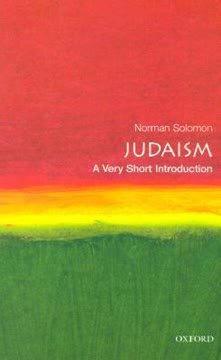
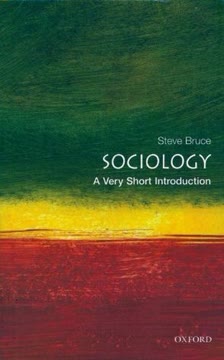
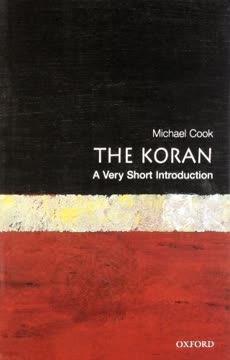
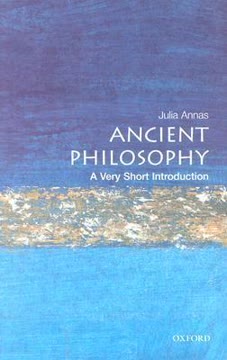
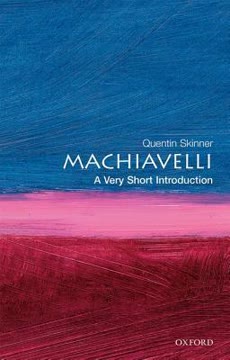
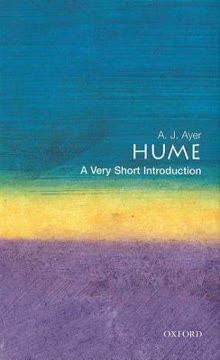
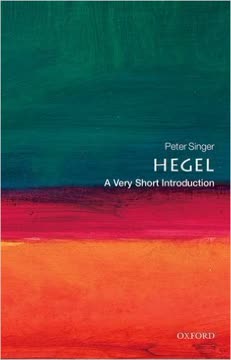
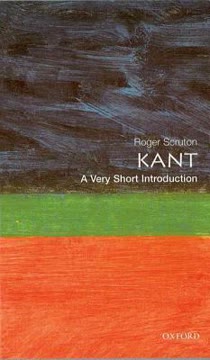
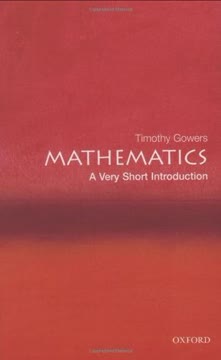
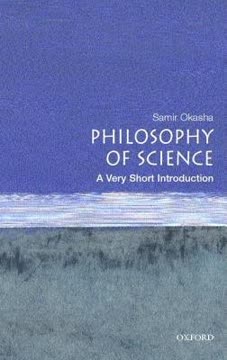
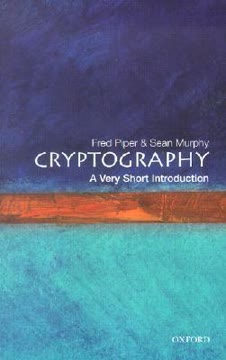
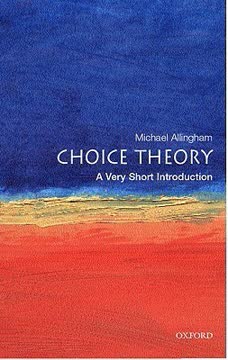
Similar Books
















